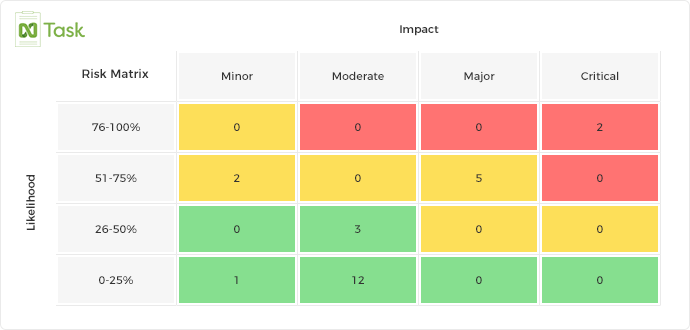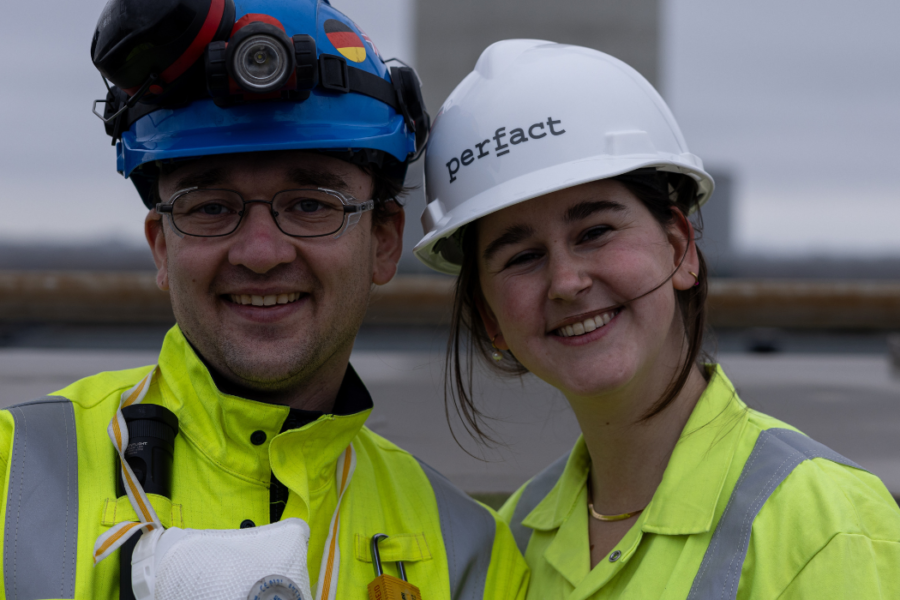It sounds simple, taking into account unexpected events that may affect a project in any way. The goal, of course, is to minimise the impact of these risks. Yet some risks are underestimated or even neglected by project managers.
After all, due to the unpredictable nature of risks, the risks expected in advance may not occur at all. Sometimes the project manager gets away with it and time and money are effectively saved, but if a certain risk does occur, the impact on progress and budget will be all the greater. If you look at large projects, which have often gone over budget and have been delivered far too late, you almost always see that certain risks have not or not properly been assessed and have completely derailed the project.
Perfact can assist project teams in guiding and drawing up a risk assessment matrix. We also support project teams in identifying, analysing and working out measures to minimise risks for a project.
But what is really important to take into account with regards to Project Risk Management?
Managing potential risks
Risks that can affect a project in any way, whether positive or negative. Any unexpected event that may affect people, resources or other processes within the project is a risk. Unlike a regular problem that happens during the project, risks are events, which appear suddenly and usually completely unexpectedly. Project risk management is the process a project manager uses to manage potential risks.
“It is often difficult for project managers to estimate what risks their projects are exposed to, when they occur and why. Precisely because of this high level of uncertainty, project risk management needs a thorough approach”, says Thomas Moers, Project Leader at Perfact.
Identification and Analysis
Project Risk Management consists of identifying, analysing and anticipating risks that may arise during the full cycle of a project. The focus is not only on the execution phase, but also on all other phases of the project. For example, if a team has only one employee in a certain role, what is the impact on the project if this employee unexpectedly leaves?
How can risks best be identified and analysed?
The project team can use specific sessions to review each phase of the project and identify what risks could potentially emerge, what the effect and impact on the project could be, and what measures should be taken to prevent the risk or mitigate its impact.
Of course, risks must be considered proportionally. A scenario such as the crash of a meteorite will undoubtedly be disastrous for the project, but the chance of that happening is extremely small.
“Using a risk assessment matrix can be a good tool to better frame risks. Such a matrix not only looks at the impact on various facets of the project, but also at the likelihood of a certain event occurring. Based on the score from the matrix, the project team can objectively decide that certain risks are negligible and that others deserve attention,” Thomas continues.

Risk assessment matrix
The impact
“Once the risks have been identified, you can anticipate them within the project. However, this almost always has a direct impact on the budget and the course of the project. In most cases, additional measures will need to be taken to prevent the risks or limit their impact if they occur. These measures often cost money and can also delay the project. But with a thorough analysis, you can keep this to a minimum,” Thomas concludes.
If you still have no idea how to go about this, please contact us without obligation so we can see if we can do something for each other.


